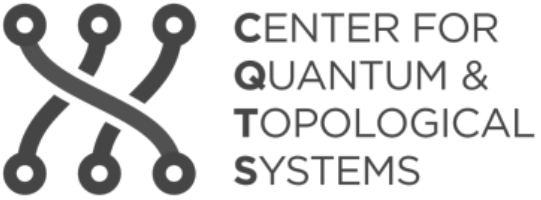Schreiber Flux Quantization on Holographic M5-Branes
An article that we are finalizing at CQTS:
-
Grigorios Giotopoulos, Hisham Sati and Urs Schreiber:
Flux Quantization on Holographic M5-Branes
download: pdf
Abstract. In search of a microscopic theory for strongly-coupled quantum phenomena like anyonic topological order – relevant such as for future fault-tolerant quantum computation – the success of AdS/CFT-inspired holography in the qualitative description of quantum materials suggests that fundamental brane dynamics may serve as the missing non-perturbative model. Here it is remarkable that over a decade before modern AdS/CFT duality was formulated, Duff et al. found a candidate microscopic explanation by identifying the CFT fields with fluctuations of probe -branes stretched out in parallel near the horizon of their own black brane incarnation.
We revisit this form of microscopic holography for the case of M5-branes, by establishing for the first time an explicit super-embedding of M5 probe branes into their own near-horizon geometry exactly at the throat radius. Following our recent discussion of flux quantization on M5-branes, this allows to globally complete the traditional local field content on the M5 by flux quantization laws necessary for capturing fractional (torsion) charged solitons. Choosing flux quantization in co-Homotopy theory (“Hypothesis H”) we find from careful analysis of the moduli space that the topological quantum states of solitons stuck at O-planes in “open” holographic M5-branes are those of abelian anyons governed by quantum Chern-Simons theory.
We close with an outlook on applications to quantum materials and quantum computation.
This article has been split into two separate parts:
Further related articles:
Last revised on August 20, 2024 at 18:05:50. See the history of this page for a list of all contributions to it.
